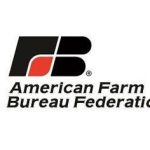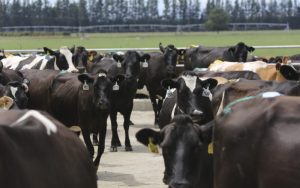
Unique emissions profiles are being sent to Fonterra farmers, to form part of farm environmental reports. They are also given nitrogen risk scorecards.
The profiles provide farmers with indicators such as the estimated level of biological methane and nitrous oxide emissions per hectare and the amount of emissions per kilogram of milk solids.
Fonterra director of on-farm excellence Charlotte Rutherford said understanding where emissions were coming from was an important step in beginning to reduce them.
The dairy co-operative gathers detailed information from each farm every year, which will be run through a computer model to provide the individualised reports, she said.
“As well as being a very practical step towards helping New Zealand meet climate change commitments, the environmental report supports our strategy to meet growing global demand for food that’s kind to the planet.”
South Wairarapa farmer Aidan Bichan is one of about 100 farmers who took part in the original pilot in 2018. He runs a 900-cow dairy farm near Featherston and said knowing his farm profile prompted him to make practical changes, including halving the amount of nitrogen fertiliser used.
“It hasn’t really impacted production because we’re getting more efficient use of that nitrogen. We’ve changed the timing and the rate of application, and we’re a lot more careful about how we use it.
”What we found was that a lot of the things we did environmentally actually made a difference to emissions.”
Bichen used to pass a tractor six or seven times through a paddock before changing to direct drilling to sow seeds. He now passes a tractor just twice, he said.
This has reduced the emissions from tractor fuel, and also from not losing nitrous oxide in the process of plowing, he said.
Most farmers would not be looking closely at their numbers yet, but the emissions initiative was a good place to start, he said.
He noted that 40 years ago it was common to dump effluent in waterways, which was nearly unheard of now.
“It will make a difference. It’s a first step. Not every farm will be able to do a lot. If you’re not doing a lot of cropping or using a lot of nitrogen there might not be too much you can do apart from reduce your stocking rate,” he said.
Rutherford said reducing cow numbers could be “challenging” initially, but looking at improving animal performance, focussing on genetic merit over time and matching feed demand to pasture growth were all ways to improve the efficiency of milk production while reducing the environmental footprint.
The reports would also be used in marketing to customers, who were increasingly focussed on climate change.
Nestlé had a target for net zero emissions by 2050 and Starbucks aimed to reduce carbon emissions by 50 per cent by 2030, while 81 per cent of consumers felt strongly that companies should play a part in environmental protection, Rutherford said.
“We need to help and support our farmers to meet our customer’s needs. It’s really a change management plan that is tailored to individual farms.”
On-farm carbon sequestration from things like forestry and wetlands were not currently included in the reports but the intention was that eventually that too would be measured and included, she said.
Fonterra was part of the Government led He Waka Eke Noa initiative to reduce primary sector emissions, which would eventually develop a methodology for assessing on farm carbon storage, she said.























